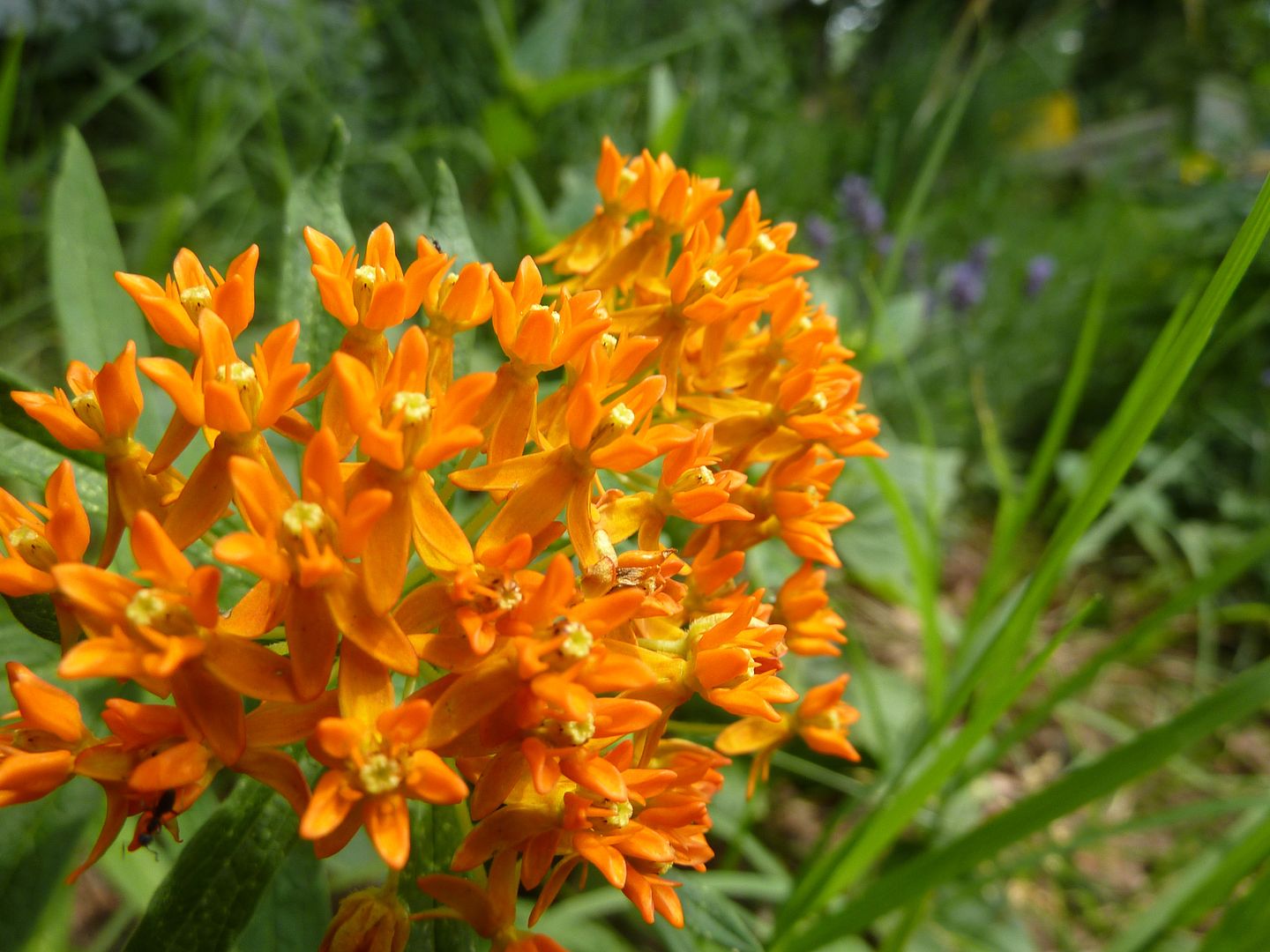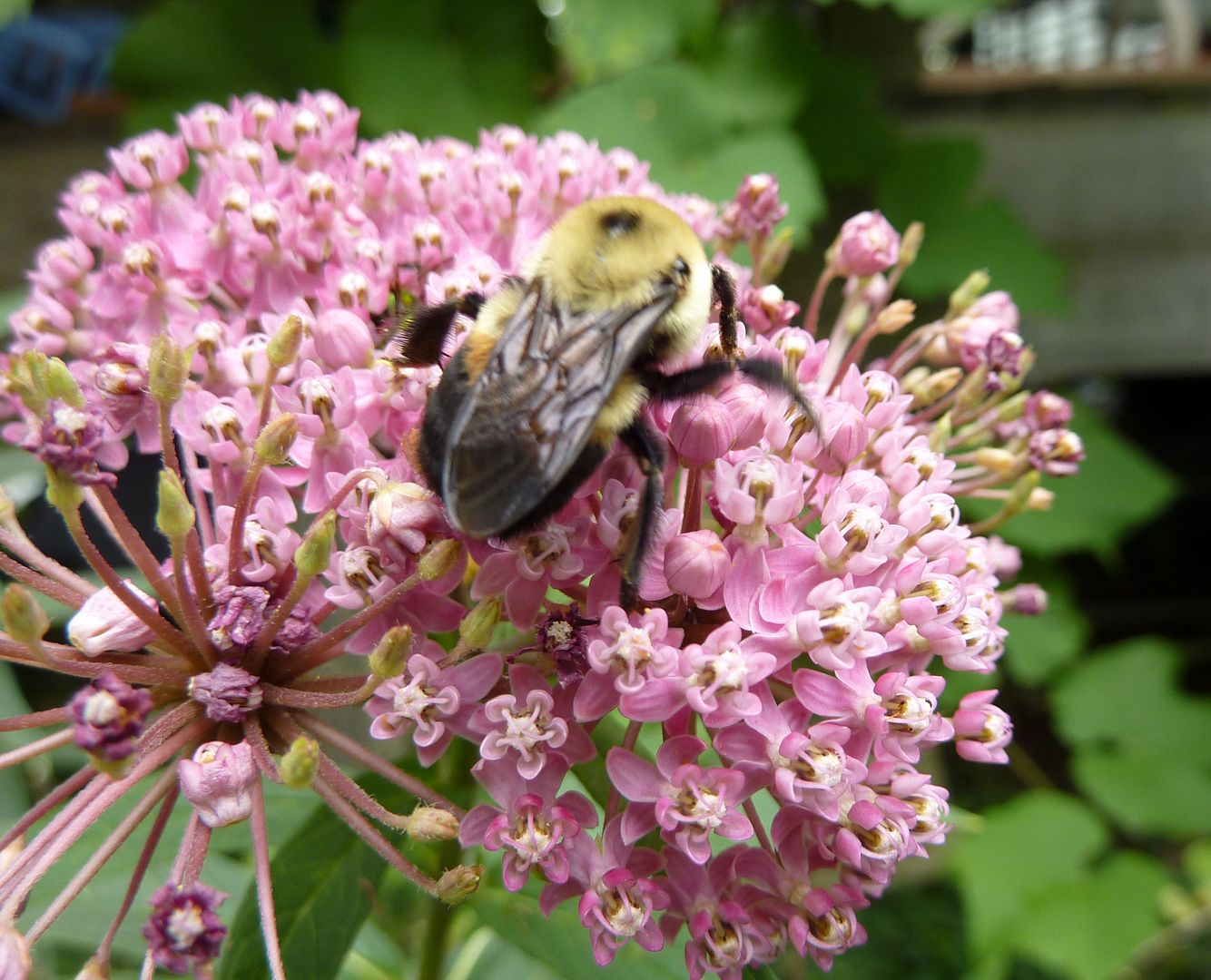Sorry for no updates in a few weeks. Basically I had half a wisdom tooth removed, (traditionally when removing a tooth they take the whole thing,) so I've been on pain killers that make me a little daffy.
Early on I had a hallucination of women in my living room, nothing sexual mind you. The first one reached over and grabbed the blur tool in photoshop, the tool bar was just floating there next to her apparently, where she kept making herself more and more blurry. There was another women facing away using the brush tool to paint the wall, though her strokes had no effect on the brickwork around our fireplace. The last was using the wand select tool to select things and make the dotted line appear around stuff, including a lamp that we haven't had in our living room in years but there it was. So that was fun.
So I'm finally off my meds, (mostly because the pharmacist is being a dick!) and well enough to operate heavy machinery, and type in complete sentences.
Out in the garden the milkweeds have all started blooming. Asclepias tuberosa, Butterfly Weed, is probably putting off the biggest show. Unfortunately they're mostly the plugs I installed only this year so none of the plants are covered in an abundance of flowers yet. Also none of them are getting any attention from the bees. Older plants send up far more shoots and have more of a small shrub appearance with lots of flower clusters. This time next year should be a dazzling show of flowers.
Despite the common name, Butterfly Weed, I find the only butterflies visiting the flowers are Skippers, Monarchs, Checkerspots, and Fritillaries. Skippers are almost a dime a dozen and I've never seen them in mass over milkweed like they do over some Sedums. Monarchs are mostly interested in it as a host plant and seem to use Milkweeds with larger flowers to nectar from, such as purple or common milkweed. Checkerspots and Fritillaries I've noticed don't seem to travel far from their host plants very often, and thus are only seen on milkweed if there is an established population nearby. I could be wrong on all this but it's just something I've noticed.
What I've been told, is that Asclepias purpurascens, Purple Milkweed, is actually a better plant at attracting butterflies and doesn't get as many bees on it for whatever reason. I want to say it has to do with the size of the flower but I'm not certain on this. At any rate, Purple Milkweed is so pretty it's a wonder why it's not as popular as A. incarnata, Swamp Milkweed. The only thing I could come up with is that Purple Milkweed must be harder to grow in nurseries or else it would be as commonly sold as A. tuberosa. In my opinion Purple Milkweed is equally as pretty as Butterfly Weed and I had hopes to plant the two together for a brilliant color combination. I've 3 plants of it, but only one produced green growth this year, and isn't flowering at all. Hopefully all three come back next year and I can get some flowers going.
Here is Asclepias incarnata, Swamp Milkweed. It's a taller plant, flowers are similar in size to A. tuberosa but clearly a different color. Actually this is a cultivar called 'Cinderella' which differs from the true species in that it lacks the white or paler pink part of the flower in favor of more pink like the rest of the bloom. Thank god for that! I found the candy-cane color of the true species to be very distracting. There is a white flowering cultivar that I didn't like either. 'Cinderella' for whatever reason is marketed as a hummingbird plant, which is the most overused lies growers use to sell plants!
Bees are the primary pollinator of milkweed! I could see a hummingbird maybe using the flower to Asclepias syriaca, Common Milkweed, which are much larger but in that case there wouldn't be any pollination. The bird would be stealing nectar and that doesn't work in my mind for a bird who's beak is designed to fit inside of tube shaped flowers. Milkweed flowers have little groves around them where insect legs are meant to step, there the anther of the flower touches and attaches itself, and the bee walks around with this on her foot until it gets stuck off inside the grove of another milkweed. I don't think hummingbirds even land when feeding.


